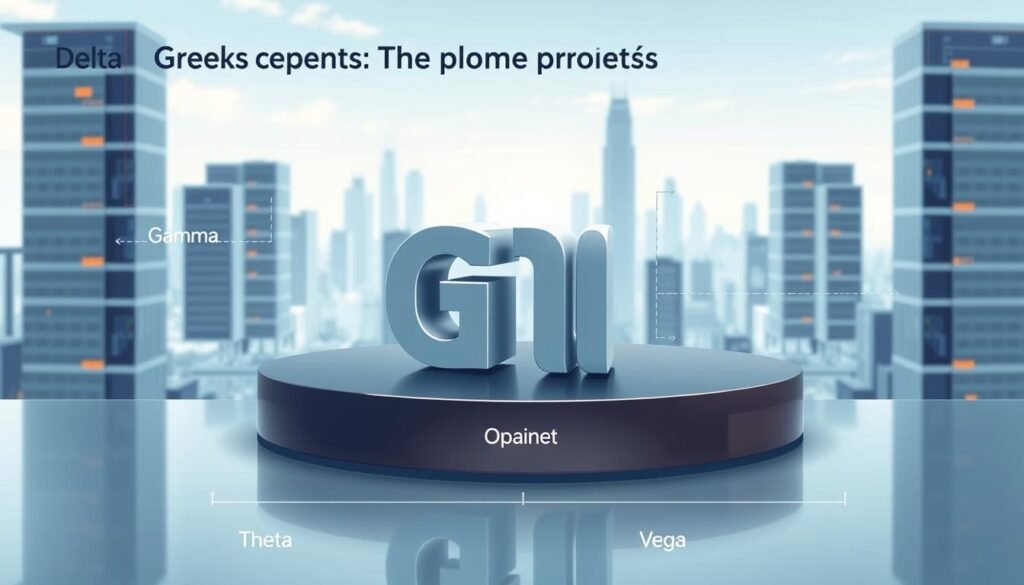Have I been missing a simple tool that can boost returns and limit loss on my stock trades?
I learned that an option is a legal contract giving me the right to buy or sell a stock or ETF at a set strike price before an expiration date. I pay a premium up front, and the seller takes on the obligation if I exercise the contract.
Each standard contract usually covers 100 shares and can be a call or a put. Price moves with the market and time to expiry, so I watch volatility, time decay, and assignment risk closely.
I use options for leverage, hedging, and earning income with covered calls. This guide walks me through key terms, simple examples, and India-specific steps to open an account and read an option chain.
What are options? My plain‑English definition
I learned a simple rule that helped me grasp option contracts fast.
An option gives me the right, not the obligation, to buy or sell an underlying asset at a set strike price by the expiration date. If I buy a call, I can buy the stock; if I buy a put, I can sell the stock.
The seller, called the writer, accepts the opposite obligation and keeps the premium I pay. That exchange of right for obligation is the heart of these contracts.
Right, not obligation: calls vs. puts at a glance
- Call: my right to buy the underlying asset at strike price.
- Put: my right to sell the underlying asset at strike price.
- Sellers take on the obligation if assigned; they collect premium up front.
Why derivatives: linkage to the underlying asset
Options are derivatives because their value tracks the underlying asset’s price, time until expiry, and expected volatility. Equity contracts usually reference 100 shares and are often American-style, so I can exercise anytime before expiration.
| Feature | Call | Put |
|---|---|---|
| Buyer’s right | Buy the stock at strike price | Sell the stock at strike price |
| Seller’s obligation | Sell stock if assigned | Buy stock if assigned |
| Common contract type | American-style, 100 shares | American-style, 100 shares |
I often close positions in the market instead of exercising. The flexibility lets me shape exposure to a stock’s potential move without owning shares outright.
How options work in practice
I learned how contracts move from promise to payoff when I watched a single trade play out. The mechanics are straightforward once I map cash flows, rights, and risks.
Buyer, seller (writer), and the premium I pay or receive
As a buyer I pay a premium up front to hold the right without obligation to execute. That premium is my cost and my maximum loss if I let the contract expire.
As a seller I receive that premium and accept the obligation if assigned. Early assignment risk exists for short positions, so I size margin and monitor dividends closely.
Contract basics: 100 shares, strike price, and expiration date
Standard equity contracts usually control 100 shares. A quoted premium of ₹1.50 typically means ₹150 per contract, so position sizing matters.
Each contract names a strike price and an expiration date. The strike sets the trade level; the expiration date is the last valid day to exercise or close the option.
American vs. European exercise styles and what that means
| Feature | American | European |
|---|---|---|
| Exercise timing | Any time before expiration | Only at expiration |
| Settlement | Usually shares for equity | Often cash for indexes |
| Assignment risk | Can be early | Only at expiry |
I often close positions in the market instead of exercising to lock gains or cut losses. My brokerage account must have options approval, and I check the firm’s exercise cut-off times before I trade.
what are options: key terms I always remember
A few simple labels help me sort any contract quickly before I risk capital.
In the money, at the money, out of the money
In the money (ITM) means a call’s market price sits above the strike or a put’s price sits below it. At the money (ATM) means the market and strike price are close.
Out of the money (OTM) is the inverse. I tag each contract as ITM, ATM, or OTM so I know how much intrinsic value it holds and the likely behavior near expiration.
Intrinsic value, time value, and time decay
Intrinsic value is the in‑the‑money amount. Time value is any premium beyond that intrinsic part.
Time decay, or theta, eats the time value as expiration nears. I remember that ATM contracts lose time value fastest as days dwindle.
- I separate intrinsic from time value to judge the total price I pay.
- OTM contracts can still hold time value if volatility and time remain high.
- ITM equity contracts may auto‑exercise at expiry and create a 100‑share purchase or sale unless I close them.
- As a buyer I fight time decay; as a seller time decay helps my strategies—so I plan strike selection with that in mind.
Call options and put options explained with simple examples
Clear examples helped me see how a small premium can control large share exposure. I will show a long call trade and a married put hedge so the math and risks feel real.

Buying a call option: my upside view
I buy a call option when I expect a stock to rise. Paying a premium gives me the right buy 100 shares at the strike price.
Example: I pay Rs 50 premium on one call that controls 100 shares. My outlay is Rs 5,000 and that is my maximum loss if the market stays below the strike.
The break‑even equals strike price plus premium. If the market moves above that, the call gains value and I can sell the option or exercise to buy underlying shares below market.
Buying a put option: my downside hedge
I buy a put to protect holdings. A put grants the right sell at the strike, setting a floor for my stock position.
A married‑put keeps upside open while capping downside. Higher implied volatility raises option price and lifts my break‑even, so I factor that into strike selection.
| Trade | Primary use | Max buyer loss |
|---|---|---|
| Long call | Leverage to profit on rally | Premium paid (example: Rs 5,000) |
| Long put | Downside hedge for owned stock | Premium paid |
| Break‑even | Call: strike + premium Put: strike – premium |
Varies with premium and strike |
Opening, closing, exercising, or letting options expire
Before I click buy, I map how a contract will begin and end in my account. To start a position I place an opening purchase (buy a call or put) or an opening sale (sell a call or put).
I exit by doing the reverse: a closing sale for a long position or a closing purchase for a short one. Most of the time I prefer a closing trade to lock gains or cut losses without taking delivery of shares.
If I hold to the end, I can exercise a call to buy shares or exercise a put to sell shares. An out-of-the-money contract usually expires worthless, which I accept when no realistic path to profit remains.
I watch my broker’s auto-exercise and cut-off times closely. Early assignment can hit writers of American-style contracts anytime, so I keep funding and margin ready for exercise obligations.
| Action | Implication | Account need |
|---|---|---|
| Open purchase | Buy right, limited loss = premium | Premium cash |
| Open sale | Collect premium, face obligation if assigned | Margin or collateral |
| Close position | Exit without share delivery | Order (market or limit) |
| Exercise / Expire | Take delivery or let worthlessness occur | Cash for 100 shares per contract or none |
I use limit orders when closing near expiration to control the price in fast markets. I log each strike, date, and potential obligation so assignments never surprise me.
Finally, I plan exits in advance—target prices or time rules—and match my action to cash, margin, and tax needs before the expiration date.
Why I use options: leverage, hedging, and income
Leverage, protection, and income shape how I use options in my investment plan. I pick trades that fit a clear goal: grow exposure, limit losses, or earn steady cash from shares I already hold.
Leverage: controlling exposure with less capital
Buying an option lets me control a larger notional position for a fraction of the price of the underlying stock. My cash outlay is the premium, so my maximum loss on the buy side equals that premium.
That leverage magnifies gains and losses. A small adverse move or time decay can quickly reduce an option’s value, so I size positions carefully and use stop rules.
Hedging: protecting a stock position with a put
When I want downside protection I buy a put on shares I own. The put sets a floor price for my position and cuts portfolio volatility.
Insurance costs premium, so I weigh protection level against how much I pay. Closer strikes buy stronger cover; longer expiries cost more but reduce time decay.
Income: covered calls and collecting premium
I generate income by selling calls on stocks I’m willing to sell at the strike. Each short call should be backed by 100 shares per contract to remain covered.
Covered calls earn premium and improve short-term return, but they cap upside if the stock rallies above the strike and I get assigned.
| Use | Benefit | Trade-off |
|---|---|---|
| Leverage | More exposure with less capital | Higher volatility impact and time decay |
| Hedge (put) | Limits downside for held shares | Premium paid reduces net return |
| Covered call | Collects premium as income | Upside capped if shares are called away |
The risks I weigh before trading options
Before I place a trade, I run a quick checklist of potential downsides. Options give flexibility, but they carry clear risks that I must manage with rules, size limits, and an exit plan.
Buyer risks: time decay, expiration, and capital to exercise
As a buyer I face time decay every day. A strong thesis can still fail if I hold until expiration and value erodes.
I also plan for exercise costs. For example, a $100 strike call requires $10,000 to buy 100 shares if I exercise. I often close instead of taking delivery to avoid that cash obligation.
Seller risks: assignment, dividends, and margin calls
Selling exposes me to assignment any time on American-style contracts. Dividends can prompt early exercise, so I monitor ex-dividend dates closely.
Short trades need margin. Sharp price moves or volatility spikes can trigger margin calls and forced liquidations in my account.
Uncovered calls and why losses can be unlimited
I avoid naked calls unless I accept theoretically unlimited loss if the asset rallies. Instead, I use spreads to cap downside and set alerts near critical price and expiration thresholds.
- I size positions, read broker rules, and keep an exit plan for every trade.
What moves option prices: premium drivers and the Greeks
I focus on a few clear forces that shift an option’s premium and its market value. These explain most daily price moves and shape my trading decisions.

The premium I pay reflects three main inputs: where the underlying asset sits versus the strike, how much time remains until expiration, and implied volatility in the market. Longer time raises premium; higher volatility lifts premium too. Contracts near the money tend to show the biggest sensitivity.
Delta and gamma: front-line sensitivity
Delta estimates how much the option price moves when the underlying moves a small amount. I use delta to size directional bets.
Gamma shows how fast delta changes as the asset moves. Near the strike and close to expiration, gamma can spike and swing option value quickly.
Theta, vega, and rho: decay, volatility, and rates
Theta measures daily time decay. On long positions I “pay” theta; on short positions I “collect” it. I limit theta risk by choosing expirations that match my view.
Vega tracks sensitivity to implied volatility. A volatility jump can lift premium even if the stock price is flat. Rho affects long-dated contracts when interest rates shift; I watch it in high-rate environments.
| Greek | Primary effect | Trader takeaway |
|---|---|---|
| Delta | Price change vs. underlying | Use for directional sizing |
| Gamma | Delta curvature as asset moves | Watch near strike and expiry |
| Theta / Vega / Rho | Time decay / Volatility / Rates | Manage time, event risk, and rate exposure |
I align my strike and expiration with the Greeks profile I want: higher delta for directional trades, lower theta for longer holds. Around earnings or RBI policy moves, implied volatility often expands then contracts, so I size positions to survive those swings. That practice keeps my position risks predictable in Indian markets.
Types of options and expirations I consider
My process begins by deciding whether I want share delivery or cash exposure from a trade. That first choice guides which product I pick and which expiry fits my time frame.
Equity versus index differences
Equity option contracts reference shares of a stock or ETF. They are typically American-style and settle into 100 shares if exercised. That matters around dividends and assignment risk.
Index contracts reference the index value. Many use European-style exercise and settle in cash, so I avoid surprise deliveries at expiry.
Daily, weekly, monthly, and LEAPS
I pick expirations to match my view. Daily and weekly dates suit very short trades but eat time value fast. Monthly expiries work for swing ideas. LEAPS give multi-year exposure and reduce theta pressure, though premium costs rise.
I also check liquidity and open interest across expirations and confirm my broker’s auto-exercise and cut-off rules for in-the-money contracts. That simple checklist keeps trades predictable in the market.
How I get started trading options in India
I began by opening and funding an account that supports derivatives, then applied for the trading level I needed. My broker choice set the tone: I wanted a SEBI‑registered firm with NSE and BSE access and clear approval steps.
Choosing a broker and getting approval
I selected a broker that offers the approval level matching my strategy and completed the options approval form. I disclosed my financials and trading experience and acknowledged risk documents.
- I fund the account to cover premiums, potential assignment, and margin for selling trades.
- Different brokers set exercise cut‑off times and margin rules; I read those before trading.
Reading the option chain: strikes, expirations, open interest
The option chain shows strike price ladders, expiration dates, bid/ask quotes, volume, and open interest. I decode each symbol to confirm ticker, date, call or put, and exact strike.
Placing and monitoring trades in my account
I place limit orders from the chain to control entry price and avoid wide spreads. I watch positions in real time, set alerts for key price levels and events, and note approaching expiration date.
- I start small, track P&L vs. the underlying stock and implied volatility, and keep a trade log with thesis, strike, date, and exit plan.
Beginner‑friendly strategies I practice
I pick a strategy that sets my maximum loss and the upside I will accept. This keeps trading simple and repeatable in Indian markets.
Long calls and long puts
I buy a call when I expect a stock to rise; my loss tops out at the premium I pay. I buy a put to hedge or profit on a fall. Both let me control shares without buying underlying stock outright.
Covered calls for income
I sell calls against shares I own to collect premium. I pick a strike that matches the price where I would sell the stock. This boosts yield but caps upside if the stock rallies.
Vertical spreads to define risk
I build spreads by buying one option and selling another at a nearby strike. This lowers premium and fixes my max loss and profit. Spreads suit trades where I want defined outcomes.
Straddles and strangles for volatility views
I buy a straddle to profit from big moves when direction is unknown. I prefer a strangle to reduce upfront price by using out‑of‑the‑money strikes, accepting a need for a larger move.
- I plan exits for the whole position, not just a leg.
- I watch implied volatility: buy when low, sell or collect premium when high.
- I size trades so one loss won’t derail my plan and I track what works in India.
| Strategy | Primary use | Max buyer loss |
|---|---|---|
| Long call/put | Directional/leverage | Premium paid |
| Covered call | Income on shares | Opportunity cost above strike |
| Vertical spread | Defined risk | Limited, known |
Conclusion
Here’s a compact summary that turned complex contracts into repeatable steps for me.
I rely on four pillars: calls and puts, strike, expiration, and the premium. These basic pieces set the value and price path I track before any trade.
I use options for leverage, hedging, and income but I respect the risks. As a buyer my maximum loss is the premium; as a seller I collect that premium and accept obligations, including assignment on 100 shares.
Option pricing moves with the underlying market, remaining time, and volatility — the Greeks help me monitor that. In India I always confirm broker approval, read the option chain precisely, and note exercise cut‑off times.
I start small, pick defined‑risk strategies, plan entries and exits, watch liquidity and open interest, and review each example to improve. Plan, execute, manage, repeat.









